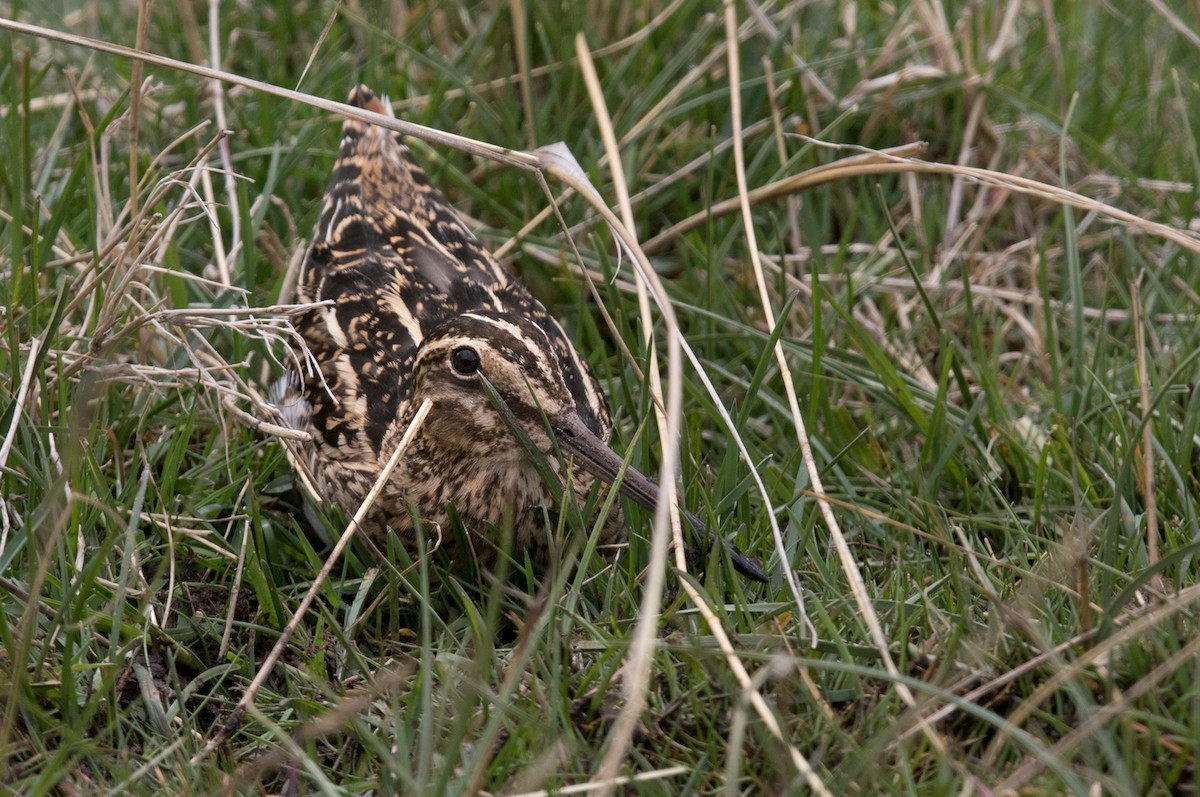Puna Snipe
A species of Typical Snipes and Woodcock-snipes Scientific name : Gallinago andina Genus : Typical Snipes and Woodcock-snipes
Puna Snipe, A species of Typical Snipes and Woodcock-snipes
Botanical name: Gallinago andina
Genus: Typical Snipes and Woodcock-snipes
Content
Description General Info
 Photo By Lars Petersson
Photo By Lars Petersson Description
This 30–32 cm long snipe has a stocky body and relatively short legs for a wader. Its upperparts, head and neck are streaked and patterned with warm brown and buff, and the gold edges to the feathers form lines down its back. It shows pale to whitish underwings when in flight. The belly is white with brown barring. The horn-colored bill is long, straight and fairly robust. The legs and feet are yellow. The sexes are similar, and immatures differ only in showing pale fringes on the wing coverts. 
Nest Placement
Ground
Feeding Habits
Puna Snipe's diet is largely unknown but is thought to be similar to its South American relatives, feeding on invertebrates and foraging like G. paraguaiae.
Habitat
The puna Snipe is commonly found in the high-altitude wetlands of the Andes. Its preferred habitats include boggy grounds enriched with cushion plants, and it is also associated with regions dominated by rushes, reeds, and grasslands. These birds often reside along the edges of lakes and rivers, and they are sometimes observed in open reed marshes within these mountainous environments.
Dite type
Insectivorous
General Info
Feeding Habits
Bird food type
Behavior
Little is known of its behaviour, but it has an aerial display, which involves flying high in circles, followed by a dive during which the bird makes a drumming sound, caused by vibrations of its modified outer tail feathers. The puna snipe forages by pushing its long bill deep into the mud seeking insects and worms. Its cryptic plumage provides effective camouflage when the bird stands motionless amongst marsh vegetation. 

 Photo By Lars Petersson
Photo By Lars Petersson